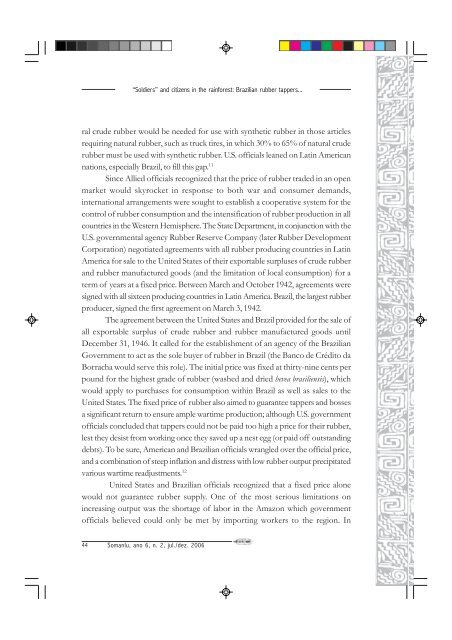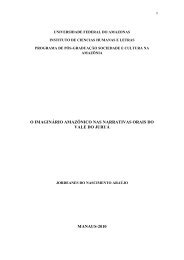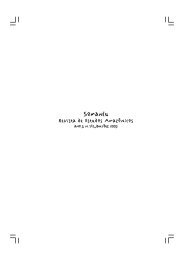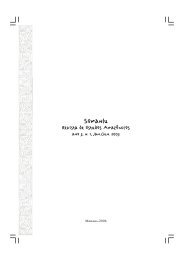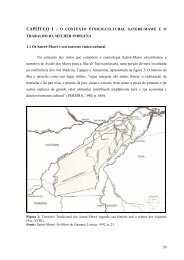somanlu jul dez 2006.pmd - Eventos - Ufam
somanlu jul dez 2006.pmd - Eventos - Ufam
somanlu jul dez 2006.pmd - Eventos - Ufam
You also want an ePaper? Increase the reach of your titles
YUMPU automatically turns print PDFs into web optimized ePapers that Google loves.
“Soldiers” and citizens in the rainforest: Brazilian rubber tappers...<br />
ral crude rubber would be needed for use with synthetic rubber in those articles<br />
requiring natural rubber, such as truck tires, in which 30% to 65% of natural crude<br />
rubber must be used with synthetic rubber. U.S. officials leaned on Latin American<br />
nations, especially Brazil, to fill this gap. 11<br />
Since Allied officials recognized that the price of rubber traded in an open<br />
market would skyrocket in response to both war and consumer demands,<br />
international arrangements were sought to establish a cooperative system for the<br />
control of rubber consumption and the intensification of rubber production in all<br />
countries in the Western Hemisphere. The State Department, in conjunction with the<br />
U.S. governmental agency Rubber Reserve Company (later Rubber Development<br />
Corporation) negotiated agreements with all rubber producing countries in Latin<br />
America for sale to the United States of their exportable surpluses of crude rubber<br />
and rubber manufactured goods (and the limitation of local consumption) for a<br />
term of years at a fixed price. Between March and October 1942, agreements were<br />
signed with all sixteen producing countries in Latin America. Brazil, the largest rubber<br />
producer, signed the first agreement on March 3, 1942.<br />
The agreement between the United States and Brazil provided for the sale of<br />
all exportable surplus of crude rubber and rubber manufactured goods until<br />
December 31, 1946. It called for the establishment of an agency of the Brazilian<br />
Government to act as the sole buyer of rubber in Brazil (the Banco de Crédito da<br />
Borracha would serve this role). The initial price was fixed at thirty-nine cents per<br />
pound for the highest grade of rubber (washed and dried hevea brasiliensis), which<br />
would apply to purchases for consumption within Brazil as well as sales to the<br />
United States. The fixed price of rubber also aimed to guarantee tappers and bosses<br />
a significant return to ensure ample wartime production; although U.S. government<br />
officials concluded that tappers could not be paid too high a price for their rubber,<br />
lest they desist from working once they saved up a nest egg (or paid off outstanding<br />
debts). To be sure, American and Brazilian officials wrangled over the official price,<br />
and a combination of steep inflation and distress with low rubber output precipitated<br />
various wartime readjustments. 12<br />
United States and Brazilian officials recognized that a fixed price alone<br />
would not guarantee rubber supply. One of the most serious limitations on<br />
increasing output was the shortage of labor in the Amazon which government<br />
officials believed could only be met by importing workers to the region. In<br />
44 Somanlu, ano 6, n. 2, <strong>jul</strong>./<strong>dez</strong>. 2006


